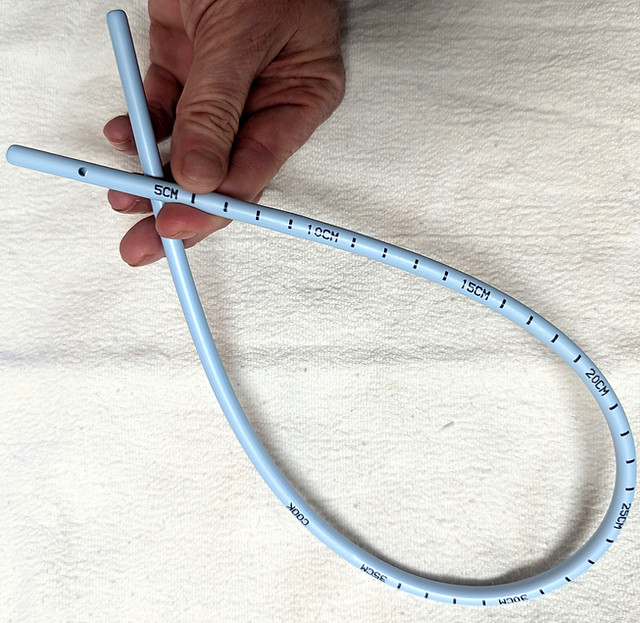Advanced Airway Management
Your Go-To for Advanced Airway How-To's
QUICK GUIDE
Use an Aintree to place an ETT following rescue LMA placement
First, ensure the LMA is in place and well seated
Continue 100% oxygen
Confirm adequate sedation/anesthesia
Confirm ventilation & paralysis
What is an
Aintree?
-
Flexible catheter used for fiberoptically converting an LMA to an oral ETT
-
aka. Airway Intubation Catheter (AIC)
-
Shorter than an airway exchange catheter so that...
-
... it can be preloaded onto a bronchoscope
-
Compatible with any "intermediate" sized bronchoscope (i.e. the Olympus 4-0 or the Verathon Slim 3.8mm)
-
Compatible with a 7-0 ETT (a smaller ETT cannot be railroaded over the Aintree)
-
Following intratracheal placement, a 7-0 ETT can be railroaded over Aintree and into the trachea
-
Comes with 2 "rapifit" adaptors (please refer to manufacturer’s guidelines for use)


first.
Prep patient.
Prep equipment.
-
Attach bronchoscope elbow to LMA and connect to anesthesia circuit
-
Confirm adequate anesthesia, muscle relaxation and assisted ventilation
-
Use silicone spray to lightly lubricate the Aintree, LMA, ETT and scope
-
Preload Aintree onto scope and secure with tape or rubber band

Next...
-
Have an assistant stabilize the LMA in place and hold jaw thrust, as necessary
-
Introduce preloaded scope through bronch elbow and into the LMA lumen


then
Guide scope into trachea
-
Sequentially visualize and advance bronchoscope through LMA, through the glottis, and into the trachea
-
Advance to the carina but never beyond (in rare circumstances the airway catheters have caused blunt trauma to the lower airways)
Remove scope
-
Note depth of Aintree using printed hashmarks
-
Remove tape or rubber band securing Aintree to scope
-
Maintain the position of the Aintree while removing the scope


Remove LMA
-
Use particular care at this point to avoid Aintree dislodgment or mainstemming
-
Disconnect LMA from bronch elbow and circuit
-
Withdraw LMA while applying counter pressure on Aintree to prevent Aintree dislodgment from trachea
-
Once the LMA cuff becomes visible, grasp Aintree in the mouth and fully remove LMA
-
Avoid main stemming - note the depth of AIC at the teeth, ensuring that it never exceeds 23cm in females, 26 cm in males
Railroad ETT
-
Railroad the 7-0 ETT over Aintree (the 7-0 ETT smallest ETT compatible with the Aintree)


Secure ETT
-
Inflate cuff, reconnect circuit and re-establish anesthesia and ventilation.
-
Confirm end-tidal CO2.
-
Consider bronch confirmation of ETT position
This should be performed in a controlled stepwise process
-
The process is designed to provide continuous ventilation/oxygenation via the LMA and bronch adaptor until the LMA is removed and ETT is railroaded in place -
Oxygen CAN be delivered via the Aintree in situations where railroading of ETT is prolonged; assisting ventilation via this route is often suboptimal and carries significant risk (narrow diameter/lack of cuff/elevated barotrauma risk) -
Refer to manufacturer’s guidelines for methods of oxygen delivery
Additional Recommendations:
-
Consider a second anesthesia provider in addition to a trained assistant
-
The Aintree catheter is not recommended with the LMA Supreme


